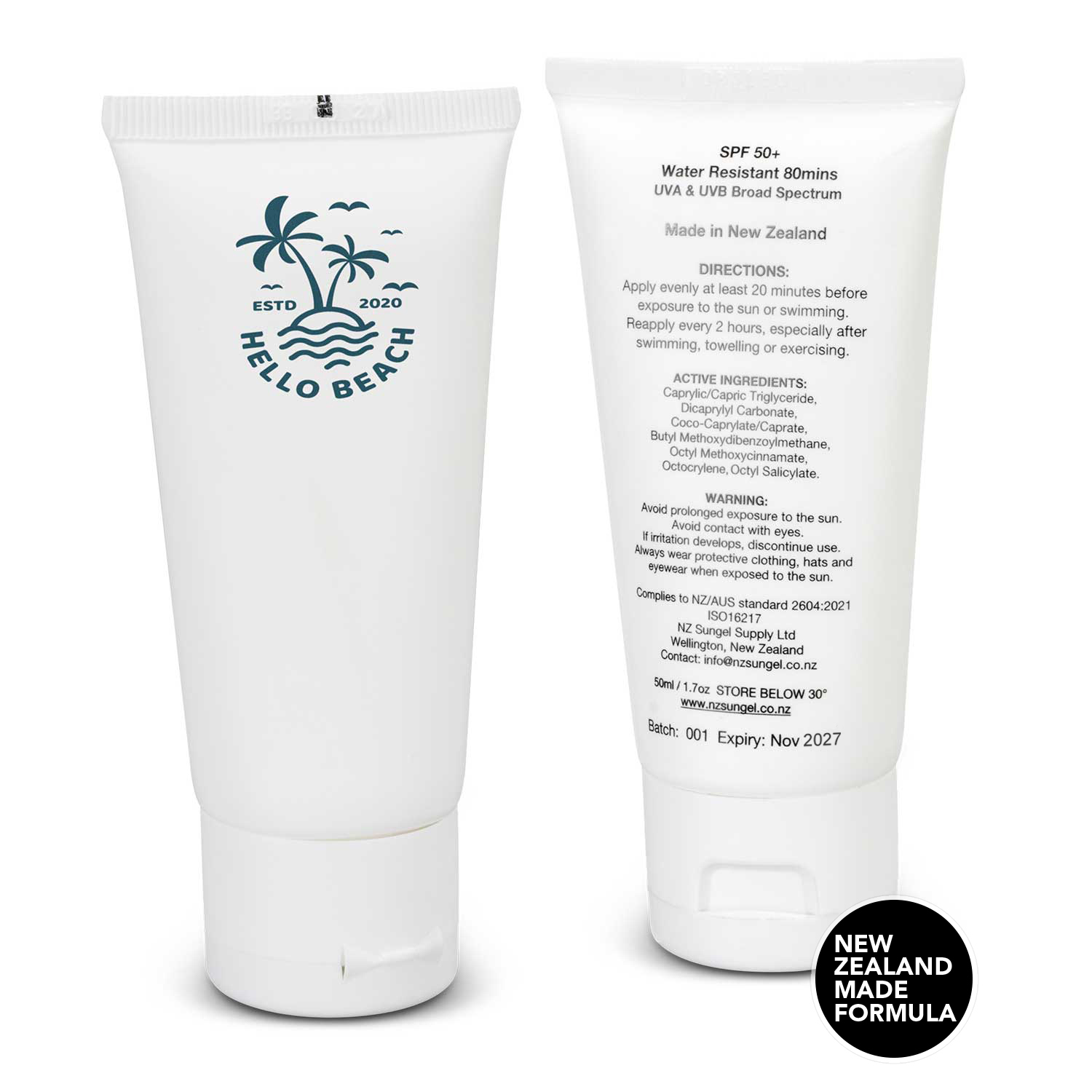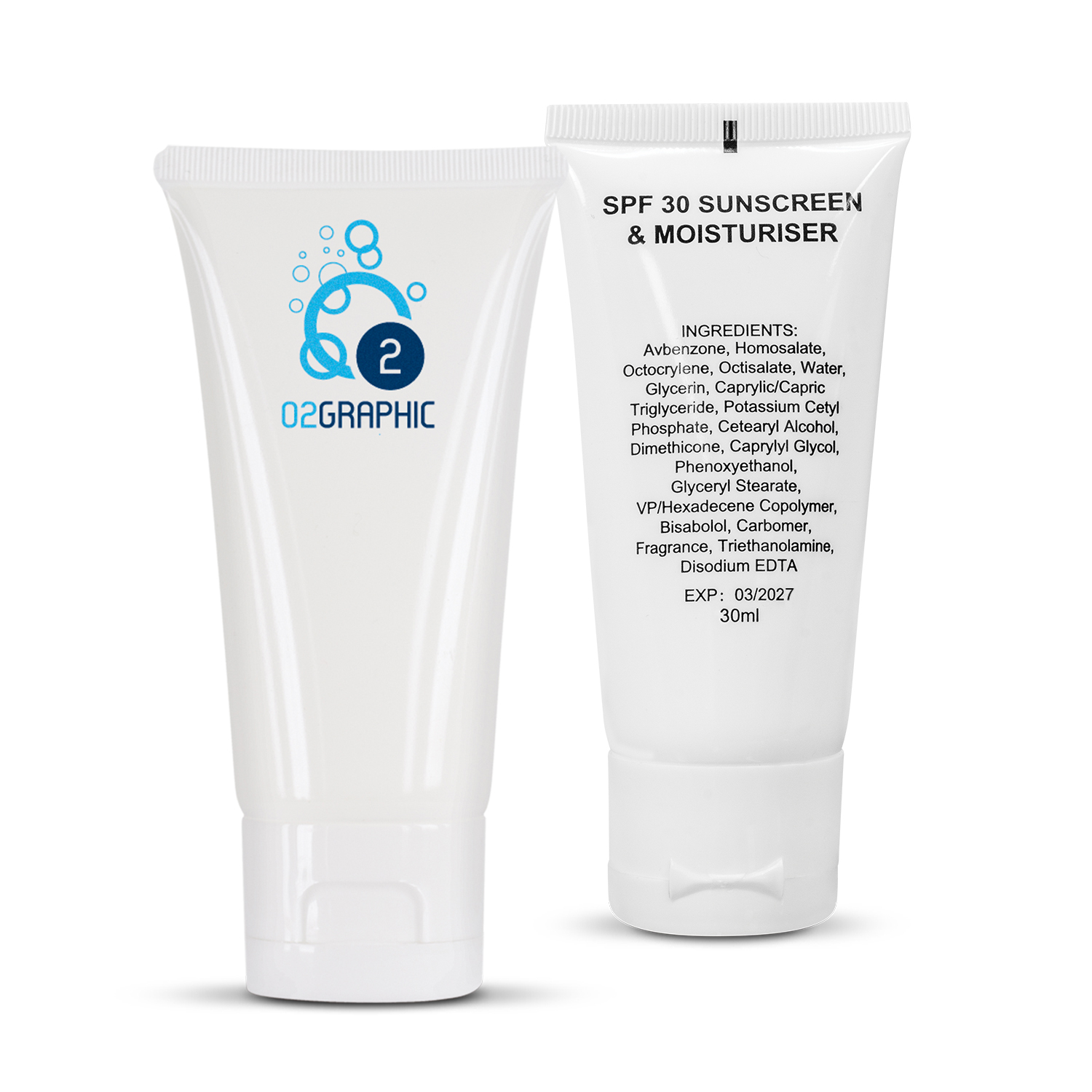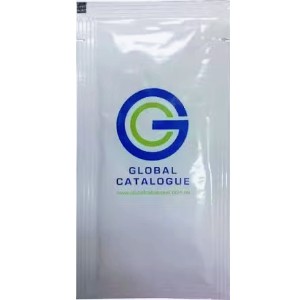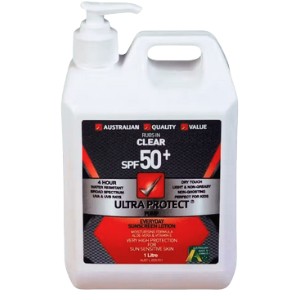Home » Promotional Sunscreens: Tips, Trends & Top Marketing Ideas »
Guide to Sunscreens Numbers and Your Skin
Last Updated: 25th April 2025
Sun protection is an essential aspect of skincare, pivotal in safeguarding against harmful ultraviolet (UV) radiation, which can lead to premature ageing, skin damage, and an increased risk of skin cancer. At the heart of sun protection lies the Sun Protection Factor (SPF), a metric often misunderstood and underestimated in its importance. This article demystifies SPF, shedding light on how different levels of SPF work to protect your skin from UV radiation.

beach sunscreen
The Science of SPF
Ultraviolet (UV) radiation, a component of sunlight, is categorised into two main types harmful to the skin: UVA and UVB rays. While UVA rays penetrate deeply, contributing to ageing and long-term skin damage, UVB rays are chiefly responsible for sunburn and play a significant role in skin cancer development.
SPF, or Sun Protection Factor, measures a sunscreen’s ability to protect against UVB rays. The SPF number indicates how long you can stay in the sun without getting sunburned, compared to how long you could stay without protection. For example, using an SPF 30 sunscreen theoretically allows you to stay in the sun 30 times longer than without any sunscreen.
Deciphering SPF Numbers
Deciphering SPF numbers is essential for selecting the most effective sun protection, ensuring that you’re adequately shielded from the sun’s harmful UVB rays. SPF, or Sun Protection Factor, serves as a relative measure of how much UV radiation is needed to cause sunburn on skin protected with sunscreen versus unprotected skin. Understanding what these numbers mean helps in making informed decisions about your skin care in the sun.
Here’s a detailed look at what different SPF numbers mean:
SPF 15
- Filters about 93% of UVB rays.
- Provides sufficient protection for everyday activities, especially for individuals who spend most of their time indoors.
- Ideal for short outdoor exposures, ensuring that skin is shielded from a significant amount of UV radiation.
SPF 30
- Stops approximately 97% of UVB rays.
- Recommended for extended outdoor activities, including light sports, hiking, or picnicking.
- Strikes a balance between high-level protection and practicality, making it a popular choice for daily use, especially in sunny climates.
SPF 50
- Blocks about 98% of UVB rays.
- Offers a marginally higher level of protection compared to SPF 30, which can be beneficial for individuals with very fair skin, a history of skin cancer, or those at high risk of exposure during intense sun conditions.
- Commonly used for beach days, skiing, or high-altitude activities where UV exposure is significantly increased.
The misconception that SPF 50 offers more than three times the protection of SPF 15 highlights a misunderstanding of how SPF works. The numerical increase in SPF represents a relatively minor enhancement in blocking UVB radiation, especially beyond SPF 30. It’s important to choose an SPF that suits your skin type, exposure time, and intensity of sunlight, ensuring that you are well-protected against the potential risks of UV damage.

spf 30 sunscreen and moisturiser
Choosing the Right SPF for Your Skin
Selecting an SPF isn’t just about the highest number. Your skin type, location, time of day, and activity level should dictate the SPF you choose. For everyday use, especially if you spend most of the time indoors, SPF 15-30 is generally sufficient. However, if you have fair skin, are in a high-altitude or tropical location, or plan to be outdoors for extended periods, opt for a higher SPF.
Proper Application of Sunscreen
Effective sun protection isn’t just about the SPF number but also how well you apply the promotional sunscreens. A common mistake is not applying enough; adults typically need about one ounce (approximately 30 ml) of sunscreen to cover all exposed skin. Reapplication every two hours, or immediately after swimming or sweating, is crucial, as no sunscreen is truly waterproof or sweatproof.
Beyond SPF: Other Considerations in Sun Protection
While SPF is vital, it should be part of a broader sun protection strategy. Clothing, hats, and sunglasses offer physical barriers against UV rays. Seeking shade and avoiding sun exposure during peak hours, typically between 10 a.m. and 4 p.m., can significantly reduce your overall UV exposure.
Conclusion
Understanding and correctly using SPF can significantly contribute to your skin’s health, preventing sunburn and reducing the risk of skin cancer and premature ageing. By debunking common myths and applying sunscreen effectively, you can enjoy the sun safely and keep your skin protected for years to come.
In summary, while SPF is a crucial factor in sun protection, it’s the knowledge of how to use it effectively and the actions we take to protect our skin that ultimately provide the best defence against the sun’s harmful rays. Armed with this information, we can make informed decisions about our sun protection, ensuring our skin remains healthy and resilient against UV radiation.






